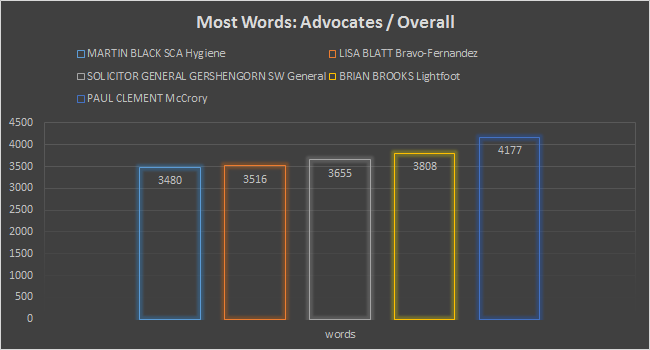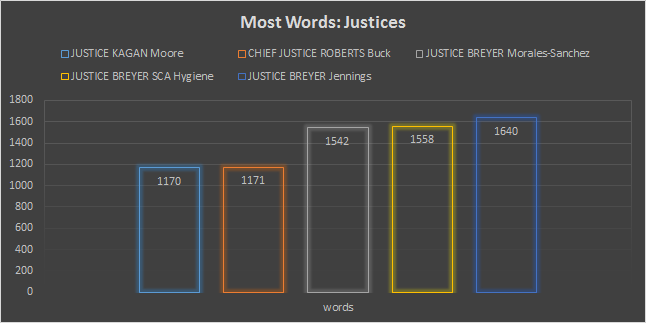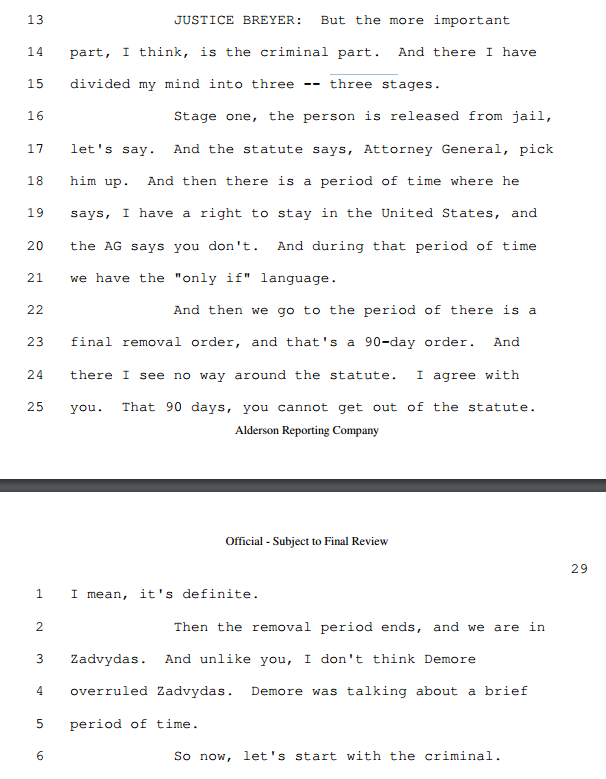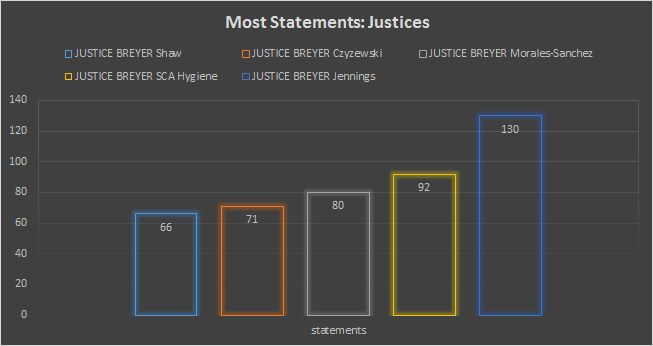We are experiencing a changing of the guard in the Supreme Court. There has been an usually long period with an eight-Justice dynamic which will very possibly continue on through the end of the Court’s current Term. Without some unprecedented occurrence, President-Elect Trump will nominate the next Justice to the Supreme Court who will likely begin sitting with the rest of the Justices at the beginning of the next Term.
The Court has completed three of its nine month, or 1/3, of its oral argument cycle upon hearing its twenty-fourth oral argument in the case of Czyzewski v. Jevic Holding Corp. yesterday, Dec. 7, 2016. These twenty-four oral arguments provide insight into the Justices interactions with each other and with advocates. They show which Justices are information seekers, opiners, and which are more reticent to speak. They validate old patterns and promulgate new ones. They also provide evidence of the issues in which the Justices are interested and of the attorneys’ abilities to convey their positions in the midst of a barrage of hypothetical and incisive questions and speculations from the Justices.
These arguments provide a rich sample of data to evaluate these interactions. Since we are only about 1/3 of the way through oral arguments this Term, this post looks at results from individual arguments rather than cumulative statistics from the cases argued so far. In particular, it looks at which Justices have most successfully articulated their questions and positions and in which arguments. Although the metrics focus primarily on the Justices, the first looks at the advocates as well.
As only two or three (with an amicus) attorneys generally speak during a given oral argument, they have more opportunities to speak than the Justices since each Justice traditionally directs his or her questions to the participating advocate. For this reason, in individual arguments, the advocates generally speak more than any of the given Justices. This was no different so far this Term. The first figure shows the speakers with the top five word counts for oral arguments so far this Term and, no surprise, they are all attorneys.

An interesting although not all too shocking facet of this graphic is that it contains some of the most prolific modern Supreme Court advocates. Paul Clement and Lisa Blatt are some of the most successful repeat litigators before the Court. Solicitor General Gershengorn has spent much time working at the top ranks of the U.S. Department of Justice. On the other hand though, Brian Brooks, General Counsel of Fannie Mae and Martin Black from Dechert LLP have no prior oral argument experience. While their word counts could be indicative of oral argument prowess or deference from the Justices, it could also be a product of the Justices seeking specific information on these attorney’s respective positions in Lightfoot v. Cendant Mortgage and SCA Hygiene v. First Quality Baby Products.
Those who are interested in judicial behavior during oral arguments are likely aware of Justice Breyer’s traditional dominance of the proceedings, at least in terms of getting words in edgewise. Although there are shifting dynamics in this and other recent Terms with increased participation from Justices Kagan and Sotomayor, Justice Breyer still tends to be the benchmark for the extent of a Justice’s participation during oral arguments. In terms of total words spoken during an argument so far this Term, Justice Breyer has each of the top three instances.

With the most words from a Justice during an argument so far this Term, Justice Breyer had a count of 1,640 words in the recent argument of Jennings v. Rodriguez. These include lengthy statements like this attempt to parse the immigration statute at issue in the case, 8 U.S.C. Sec. 1225

Justice Breyer was not far behind his word count in Jennings with his counts in SCA Hygiene and in Morales-Sanchez another case dealing with separate immigration statutes.
Following Justice Breyer is Chief Justice Roberts and Kagan in two death penalty cases argued so far this Term Buck v. Davis and Moore v. Texas.
Building from these high speaking instances, we see a trend towards more questions from the Justices in criminal cases so far this Term. The next figure shows the five instances with the most questions from a Justice from an oral argument so far this Term.

Of the cases with the most questions from the Justices, all of the cases deal with criminal-related subject matter. Beckles and Shaw look at criminal statutes while Buck and Manuel v. City of Joliet both deal with Constitutional questions (the Sixth and Fourth Amendments respectively). Justice Sotomayor asked the most questions in Beckles and asked the second most (tied with Chief Justice Roberts) in Buck. The questions in Beckles, a case dealing with the retroactive application of the Johnson case, were predominately to do with Johnson and the application of the Sentencing Guidelines.
The Justices make statements in oral arguments as well as ask questions. The Justice with the most statements in all of the top five instances of Justices’ statements was Justice Breyer (a finding that should come as no surprise to Professor Josh Blackman).

Justice Breyer had the most statements by far in Jennings as described above. The other two arguments with the most statements from Justice Breyer were also the two cases where he also spoke more on the aggregate than any other Justice in any other argument so far this term: SCA Hygiene and Morales-Sanchez. Breyer was also in the top five for overall number of questions in Shaw, the argument with the fifth most statements for any Justice so far this Term.
These findings underscore Justice Breyer’s prominence at oral arguments as we have seen in prior Terms. They also reflect that the Justices tend to ask questions in criminally-related cases and that the Justices who ask the most questions are not necessarily those that make the most statements. Finally, we see that top Supreme Court advocates are well versed in making the most of their opportunities at oral arguments, but that newcomers to SCOTUS arguments also occasionally have the floor for a sufficient amount of time to make a large contribution. Will this pattern hold up across the remainder of the Term? Stay tuned.
On Twitter: @AdamSFeldman
7 Comments Add yours